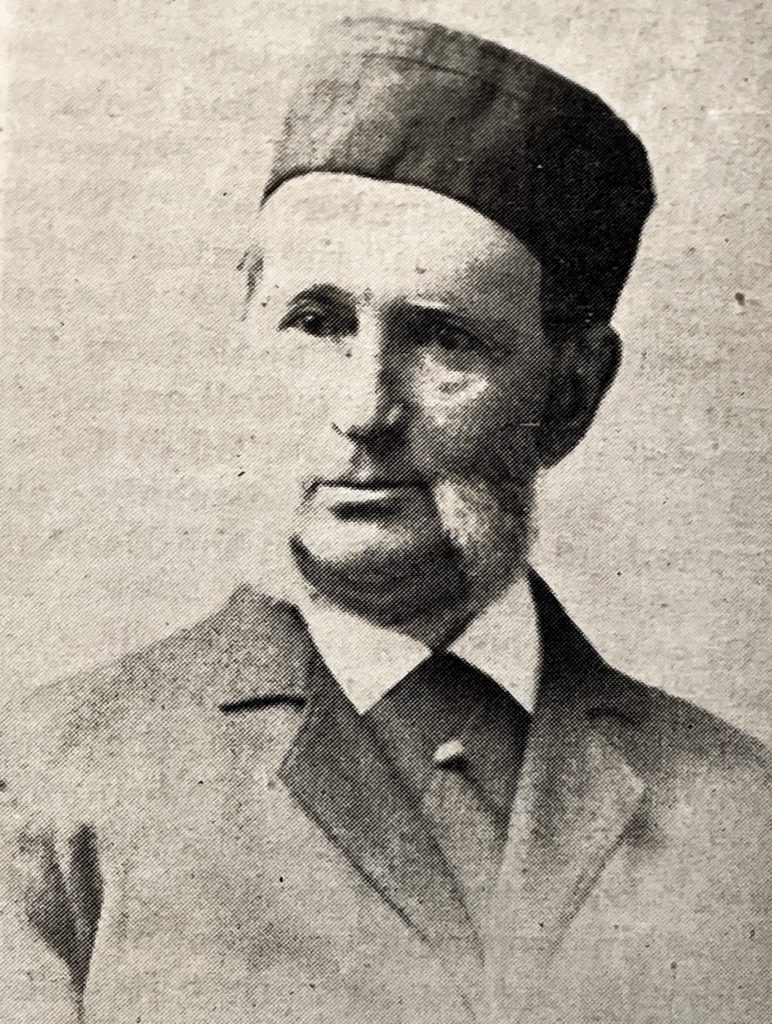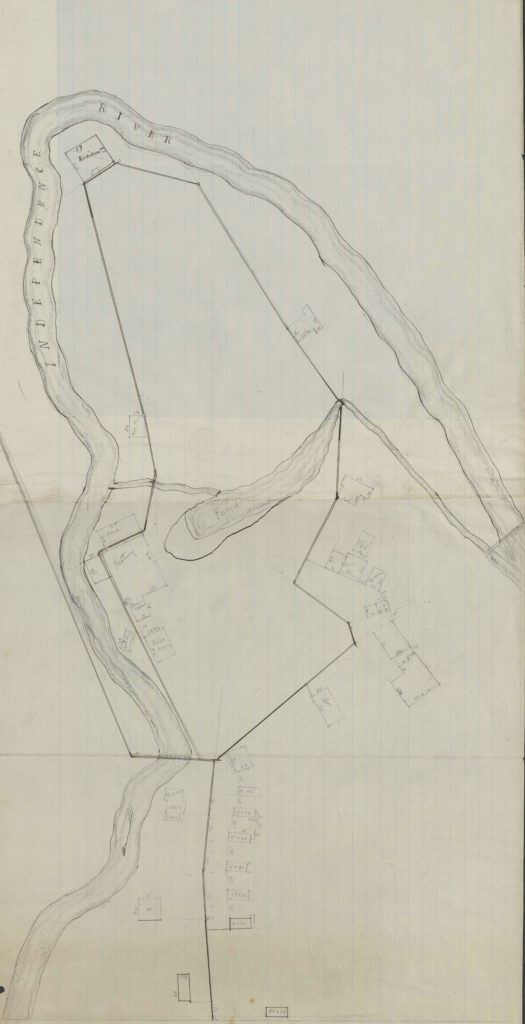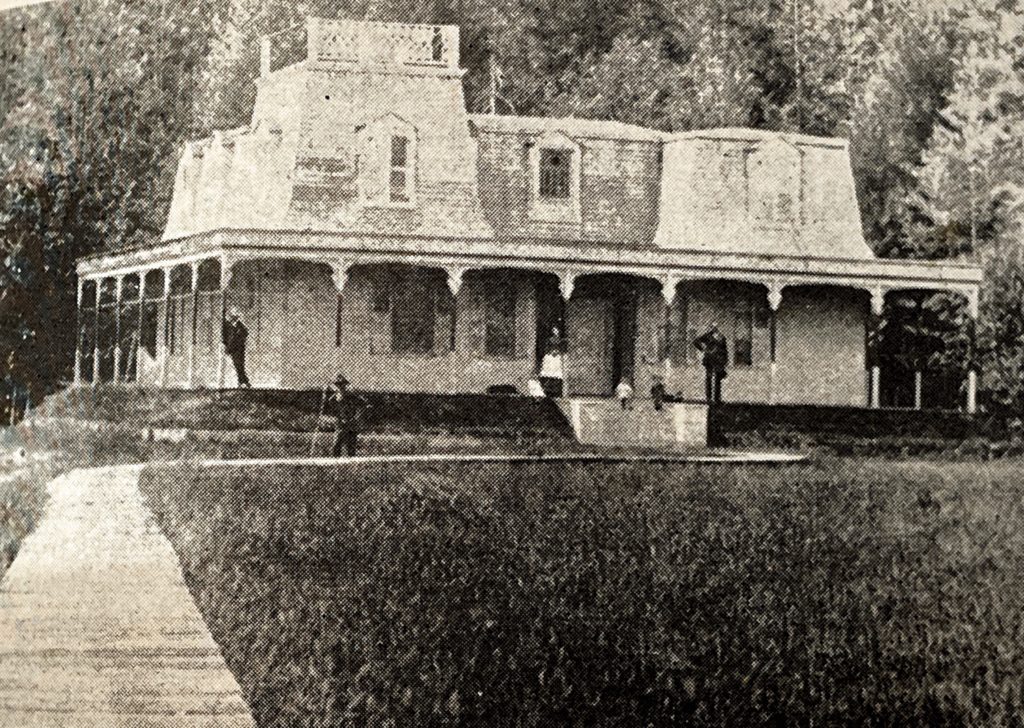Dannatburg
One of the Lost Communities of Lewis County
Lewis County once counted amongst its numbers a variety of small settlements and hamlets, which today are mostly consigned to history. One of the most prominent of those was Dannatburg, a not inconsiderable settlement that saw its heyday in the late 1800s/early 1900s as a lumbering industry center with strong ties to New York City.
Dannatburg was situated on the Independence River, just north of what once was Rockville, along the boundary line between modern day Watson and Greig, about a mile from Chase’s Lake.
With a population that ultimately topped out around several hundred – say roughly the size of today’s Turin or Constableville or Castorland – it had all of the accoutrements one might normally associate with communities of that period: streets; houses; a post office; a large school; boarding facilities; stores; and several mills and factories. And yet, little now remains to mark the location of this historic place. While a few seasonal and second homes dot the area, Dannatburg is largely a faded memory at the end of an old road, which dead-ends at a washed-out bridge abutment on the Independence River – a road, we might point out, that routinely is misspelled “Donnattsburg.” But let us tell you, this place once was a thriving and prosperous Lewis County community.
It began in the mid-1800s, when the first sawmill was built along the Independence in that location. The mill was soon acquired by John Crandall, a Quaker from New England, and quite quickly a hamlet known originally as Crandallville grew up around the mill. By the early 1870s, in addition to the mill, the community had acquired a joiner shop, a sash and blind factory, a store, a boarding house, a number of individual houses and upwards of 75 permanent residents. When the first mill burned, a larger mill was put up, which turned out hundreds of thousands of board feet of lumber a year. A canal was constructed creating an artificial island in the Independence, and a large mill pond was built for storing logs that were driven down the Independence each Spring.
By 1880, however, the Crandalls had agreed to sell their interests to William Dannat and the lumber merchants, Dannat & Pell. Dannat had become a lumber business entrepreneur after the Civil War, and his family business, Dannat & Pell, ran lumber yards in NYC that were among the most extensive anywhere in the American lumber industry. And when Dannat & Pell began buying large timberland acreage in Lewis County, Dannat himself focused on expanding the industrial capacity of Crandallville, which (not coincidently) was soon renamed in his honor as Dannatburg.
He built another sawmill, put in several upstream dams to hold the large log volumes, established more factories to manufacture tables, bedstands, carriages, and the like, built a tram railway from Stony Lake to Chase’s Lake in order to haul logs, and commissioned and installed a powerful steam engine to supplement the mills’ water wheels during those seasonal periods when the Independence was running low. Finished lumber and goods were then transported to Dannat’s landing at the Otter Creek lock and dam on Black River, where they would be loaded on canal boats and transported to New York City.
So busy were these mills and factories that Dannatburg quickly experienced a building boom. New homes came to line both sides of the Independence, streets were put in, additional boarding houses were put up, the school was enlarged and a post office was established. And while no church was ever built, the community had its own Methodist society, which conducted infant baptisms in the turbulent waters of the Independence. And for some twenty years or more, Dannatburg was a Lewis County boom town. Upwards of 300 men were employed by its businesses; 75 or more children routinely attended the Dannatburg school; and local lumbering industry thrived.
Dannat himself so came to love the sylvan solitude of the area that he ultimately built a large summer home on a man-made island in the middle of the Independence River. While the details of this mansion are somewhat scant, it had a mansard roof, was surrounded by a large veranda, and its interior woodwork and flourishes, balconies and large winding staircase were done in beautiful black walnut – much of which was said to have been crafted, installed, torn out and re-done until Dannat himself was satisfied with its look and quality. Large ornate stained glass windows were even imported from Paris just so the main hall would enjoy colored lighting. And the dapper Dannat was said to patrol his vast estates suitably attired in a frock coat, silk stovepipe top hat, bespoke boots, and gentlemen’s gloves, generally with a silver-topped walking stick.
But make no mistake, Mr. Dannat’s urban life amenities and high fashion aside, life in Dannatburg was anything but easy. Like many of the lumber industry mill towns in Lewis County at the time, those who worked there faced the dangers of sudden river floods, unexpected forest fires, treacherous log drives, unsafe mill conditions and, all too often, the loss of life, sometimes in horrible fashion. Unfortunately, such was the nature of that business at the time.
And then, almost as quickly as Dannatburg grew to such prominence, its fortunes began to decline with the dawn of the twentieth century. Dannat would die on a trip abroad in 1889, his mansion on the Independence burned, his remaining business partner, Charles Pell, and Dannat’s family were less enamored with Lewis County than Dannat had been, their holdings in Lewis County were gradually sold, and ultimately his company, Dannat & Pell, was liquidated. Business at the local mills declined and, without Dannat’s robust NYC connections, ultimately it dried up altogether. Residents moved away; many of the houses were sold off and, so as not to be wasted, a good number of them were moved and rebuilt elsewhere; and the rest…well, they just faded away. Even the square whitewashed schoolhouse, which once was filled with young children, dwindled away until no students were left – though for years, this building stood as the sole vestige of the once prosperous community. But today, even the Dannatburg schoolhouse is gone.
Explore More Posts
Categories
- Goings On (5)
- Objects & Artifacts (2)
- People (9)
- Places (5)
- Preservation (2)
- Uncategorized (15)




